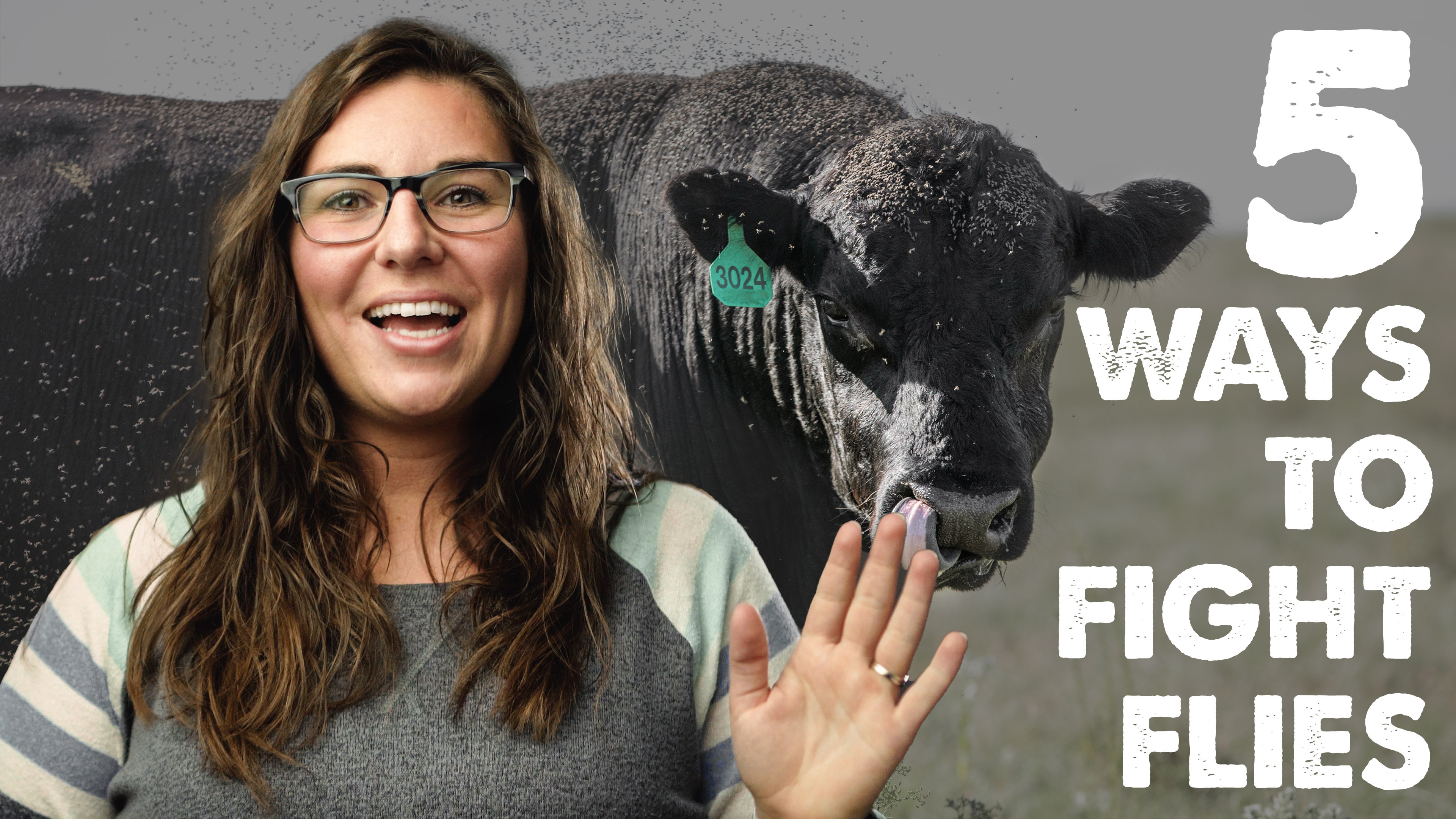Last updated on October 5th, 2023 at 11:52 am
Have you found that over the years, it's become more challenging to fight flies on your cattle operation? It’s frustrating because flies cost time and money. They’re a stressful summer pasture problem for you and the cattle. Worst of all, if flies become a big enough problem, they can even hurt cattle performance.
If it seems like flies have gotten worse on your ranch, it may be that they’ve built up resistance to the fly control product that you use. When flies build up resistance to a product, they’re no longer repelled by it, hence they stick around, and the fly population increases.
So how can you prevent this annoyance to you and the cattle? It may be simpler than you think. By simply switching cattle fly control products and the mode of action, you can reduce fly populations, cattle stress, and improve production and performance.
What are the most effective ways to fight flies on cattle?
- Fly tags
- Pour-ons
- Dustbags
- Cattle rubs
- Sprays
- Feed-through fly control
These are all excellent options that will help control flies on your cattle, but it's important to thoroughly understand each one to see which one will best fit your operation.
1. Cattle Fly Tags
Fly tags these days have more insecticide in them than they used to, which allows them to have better fly control than fly tags on the market in the past.
When looking at fly tags, be sure to check their mode of action; this will help you understand which species of flies it can handle. It’s important to realize that not every fly control option is effective on all fly species.
Another thing to be aware of is how many fly tags to use per animal. Typically, a mother cow needs two fly tags, while a calf only needs one.
Since fly tags are typically a chemical kill, you may want to consider changing your mode of action every 1 to 2 years. This ensures that the fly population will not build resistance to one particular fly control method.
When should you start using fly tags? Typically, companies recommend that you apply the tag to the cow after fly season has already started. That way, it hits hard as soon as the cattle are turned out to pasture. Then, when fly season is over, it is recommended to bring the cattle back in and take the tags off to prevent the insecticide from dripping when it’s no longer necessary.
Fly tags are a great option to control flies, but they can be a little bit more time-consuming for you, in reference to handling cattle to put them on and take them off.
2. Pour-On Fly Control
There are many effective pour-on fly control options on the market - even some that include internal parasite control.
Since pour-ons are typically a chemical kill, like fly tags, you should consider changing the mode of action every 1 or 2 years to help reduce the chance of flies building up resistance.
Pour-ons often seem like a very practical option, because you can pour them when you're already working the cows in the spring. However, most pour-on product labels do say to apply it again to the cow mid-season. This is when pour-ons can become more challenging, time-consuming, and costly, especially if you are in big country and unable to bring the cattle in easily.
3. Dustbags & Cattle Rubs
Dustbags and cattle rubs are great if you have a proper setup for them, as they can be less labor-intensive than other fly control options.
It’s important to keep in mind, though, that unless you have it set up in the perfect spot where every animal will touch it, there's a chance that some of your herd won’t ever get the rub.
Again, be mindful of the fly control mode of action so you can rotate methods periodically to reduce the chance of flies building up resistance.
4. Cattle Fly Control Spray
Sprays work well for fly control as well, although they can be more labor-intensive, depending on your program setup.
Most sprays need to be sprayed consistently in order to be effective, so you may have to be out with the cattle more often. Some ranchers invest in equipment like foggers, which ensures that the cattle get sprayed adequately without the rancher having to spend as much time out there. Then again, using foggers may cause the upfront cost to increase slightly.
These are all pros and cons to weigh out to make sure you make the best decision for your operation.
5. Feed-Through Cattle Fly Control Options
Last, but not least, is feed-through fly control. This can be a very effective option if fed properly, and usually requires minimal labor on the part of the rancher.
Feed-through fly control is efficient because it is offered on a very consistent basis with their feed; since they're constantly consuming feed, they’re constantly receiving fly control.
Based on your program and protocol, how you offer feed-through fly control can play a large part in its effectiveness. If fly control is in feed, then you know all the animals are getting it as long as they’re consuming the feed. If it's a fly control in a lick tub, it’s important to make sure the tub-to-cow ratio is on point. It’s also important to make sure that the cows on the bottom of the pecking order are receiving enough product and not missing out.
Feed-through options usually need to be put out earlier than other fly control methods. Typically, it's recommended to begin feeding it 30 days before the last frost in the spring all the way through to 30 days after the first frost in the fall. So, while feed-through options have a longer feeding season, the benefits of consistent fly control often make it worth it.
Make the Choice that Fits Your Operation
While it is nearly impossible to get rid of all of your flies, there are some excellent solutions that will get the fly population under control and reduce the negative impacts caused by them. Each fly control method has its own benefits and drawbacks, and ultimately, it comes down to analyzing your operation to see which one makes the most sense.
Here at Riomax®, we offer 2 types of feed-through fly control options, but we understand that they may not be fitting on every ranch across the country. If feed-through fly control is something you’d like to try, we’d love to be the solution to your fly control problem.



